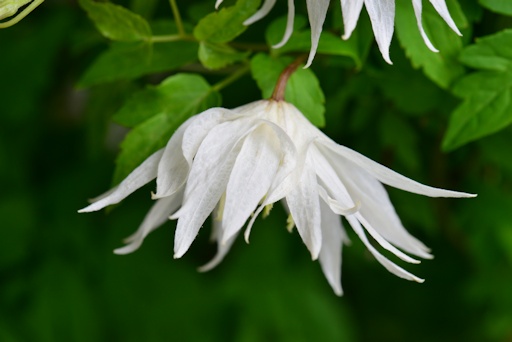Clematis of the Month for November 2015




Clematis ‘Albina Plena’ is a crossing between C. fauriei and C. sibirica by Magnus Johnson in 1982. It was appointed “Elitplanta” in 1995. Magnus made more of these kinds of crossings but this one was white and (half)double. The sepals are long, similar to C. sibirica.
Atragene clematis forms have lantern-shaped flowers and their silky seed heads are attractive throughout the season. The atragenes are one of the first clematis to flower in the spring.
C. ‘Albina Plena’ is usually not more than 4 metres tall, with white double flowers about 5cm wide (2 in). Looking at a close up of the flowers you can see the detail of the speckling on the flowers round the point where the sepals meet the flower stalk. If you look to one of the parents, C. sibirica you also see a red ring in the same place (see above right).
C. ‘Albina Plena’ is a deciduous climber and is a floriferous and reliable small clematis. The flowers appear in mid spring to early summer. It requires full sun to partial shade. Prune or tidy up after bloom or cut back hard soon after bloom to revitalize. This cultivar belongs to Pruning Group 1. Atragene clematis can be used to grow along with other wall trained shrubs, with shrubs in the border and on north facing walls, to give added color and interest in mid to late spring. The white flowers of C. ‘Albina Plena’ are very attractive when we have not so many flowers in the garden. C. ‘Albina Plena’ is very hardy; zone 3-9.
My experience with atragene group Clematis is that they do not like wet ‘feet’ during the winter. I have always lost them in wet parts of my garden in winter, especially during the first years after planting. You must also place alpinas in an uncrowded place in the garden so that you can see the flowers because the flowers do not stand very far out of the many leaves.
